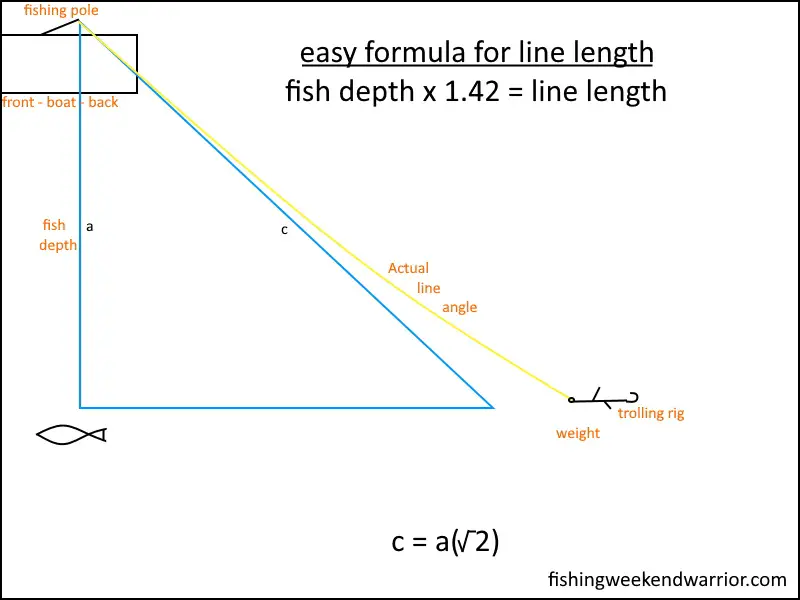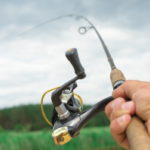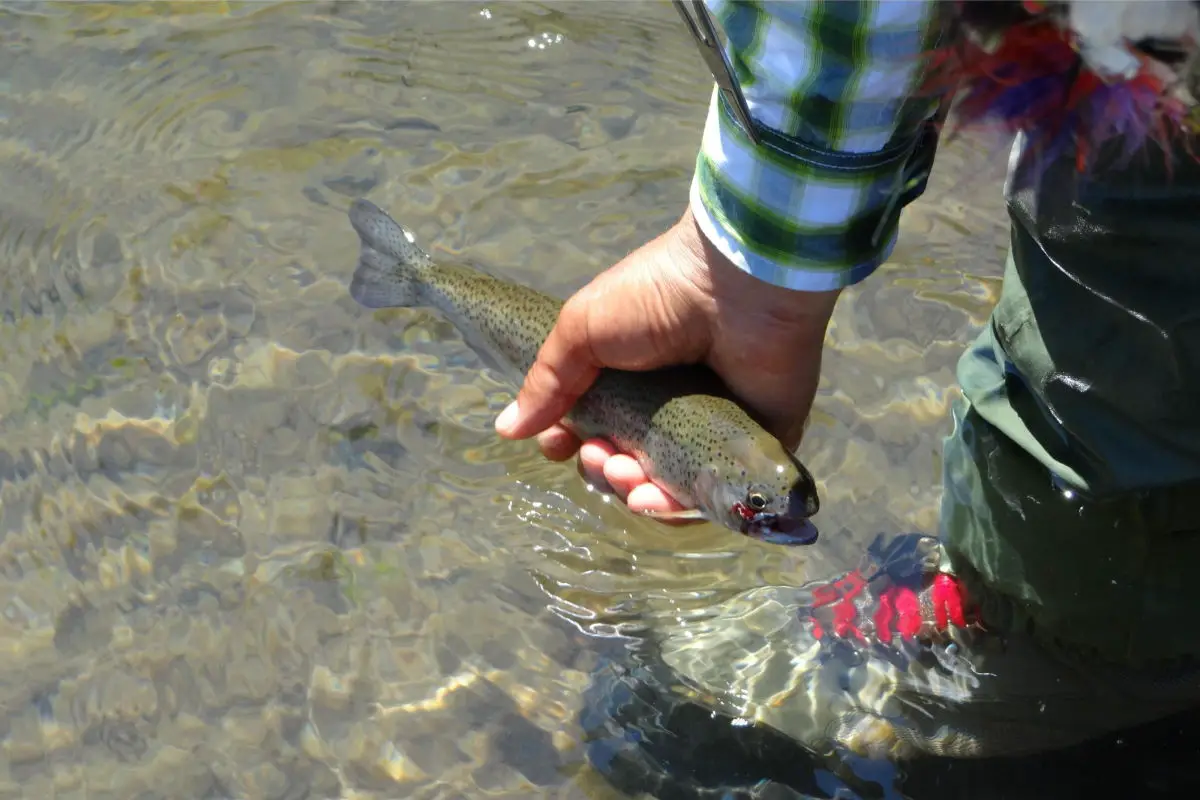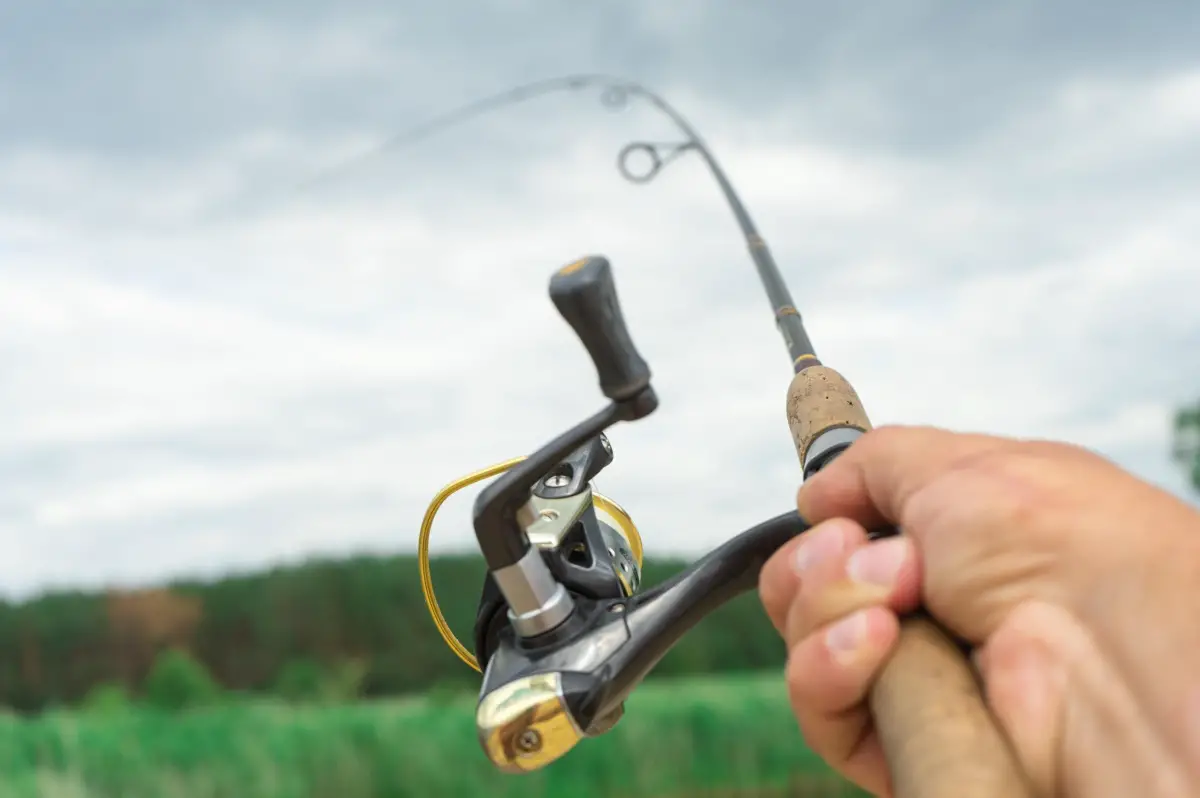When you head out for a day of fishing, you first gather up your equipment. Most of us head out to the garage or storage shed and rummage through until we find our poles and tackle box, and off we go.
However, when we go through our gear, a common question is, Do I need a line counter reel for rainbow trout trolling? You don’t need a line counter reel to catch rainbow trout. However, you need to keep detailed track of how much line you let out when trolling for rainbow trout so you can repeat what worked when you get a bite.
In this article, we will talk about releasing line and how to keep track of the exact amount.
Note: most links in this article are Amazon.com Affiliate links, see Affiliate Disclosure, thank you.
What is a Line Counter Reel?
A line counter reel is a reel with a built-in digital line counter. The digital counter tracks the amount of line released and retrieved as you use your reel.
Generally, line counter reels are level wind reels, which means the fishing line spool and the handle are on a horizontal plane to each other. The horizontal design allows for a direct drive gear-to-gear connection between the spool and the handle.
Typically, the line counter connects to a transmission gear through a long shaft with a gear on the end. The transmission gear converts the main spool gear rotation to the correct number of revolutions for the line counter to accurately read out your line length.
Over time the line counters are one of the first parts to fail, and it can be hard to find replacement parts for older reels. When using the line counter, try not to push the reset button harder than needed. Also, when doing reel maintenance, add fresh grease to the shaft gear and use care when reassembling.
As a note, the line count number is an estimate and can change depending on line type and the amount of line on the spool.
What are Common Reels Without Line Counters?
Spinning reels never have line counters. A spinning reel’s design makes it challenging to support a line counter. However, tomorrow someone will design one to prove me wrong, lol.
When fishing reels were first made, none had a line counter. These days level wind reels are about 50/50 with a line counter, directly correlated to cost. Cheaper reels don’t have line counters.
A good reel is not only based on line counters but rather durability. If your reel lasts years without issue, that is how you judge a fishing reel’s quality.
For rainbow trout trolling, a big reel is not the top factor. In order of most importance, we gauge reels based on durability, ease of use, drag strength, maintainability, then line counter.
All that said, a line counter is still important for repeatability when you get a bite. But never fear because if you use care and attention to detail, you can still have great results without a line counter.
How do I Count Line Let Out from my Reel?
Lighten your drag setting so you can easily pull the line off your reel. Grab your line as close to the reel as possible. Slowly pull your line until your hand touches the first eye on your pole. This action releases just under two feet of line. Pull slightly more line for a full two feet on each pull.
This system of measurements is referred to as “pulls” by most fishermen. The reason pulls work is because the distance between the reel and the first eyelet is roughly twenty inches.

It is easy to verify the distance between the reel and eyelet by running a measuring tape along the line. Knowing the exact measurement can allow for repeatability in reels without line counters, which will help you catch more fish.
Pulls have another benefit of helping to prevent tangles because it slows your line release. I recommend that people use the pull method even with a line counter.
Tip: Some people will use the space between the first eyelet and the second eyelet, and this distance is typically just over 12 inches. Adding a small piece of blue tape to the rod shaft can act as a marker for exactly twelve inches.

How Much Line do I Let Out to Start Trolling for Rainbow Trout?
Twenty-five pulls or fifty feet is our standard starting line length when trolling for rainbow trout. The length of line you let out will change once you find the fish.
Every body of water is different, but having a starting point is always a good idea. I like to move to my first location and set out the two side poles while I watch my electronics to locate fish.
Once I locate a group or school of rainbow trout, I will add weight and let out line to get just above their depth. You can estimate your depth by adding weight to keep your line at a 45-degree angle and doing an estimate.
If you are mathematically inclined, use the formula c = a X (square root 2) or c = a X 1.4142. I like to keep it simple for my phone calculator, so I take fish depth X 1.42 = line length. I use a slightly higher number value to account for line scoping caused by trolling the flashers.
Finally, when fishing in shallow lakes, you will need to use trial and error. When setting out your poles put each out ten feet longer, starting with one side and ending with the back center pole being the farthest back. Also, consider not using weight on the back center fishing pole.
What is Our Favorite Line Counter Reel for Rainbow Trout Trolling?
When looking for a line counter reel for rainbow trout trolling, a budget-friendly reel that is durable and easy to use is our top concern. The Okuma Magda 20DLXT is an excellent line counter reel for rainbow trout trolling, and if you upsize your reel to a 30DLXT, it can also work well for salmon and steelhead trolling.
Okuma is a powerhouse of fishing equipment with a variety of reels and poles. The Magda series reels are the Okuma’s line of entry-level line counter reels. The reel housing is a plastic with a standard metal spool, guides, and various material gears.
The drag weight on the 20DLXT is 15 pounds, but if you are so inclined can be slightly upgraded with carbon fiber drag washers. The model we recommend is a left-handed reel, but if you must have a right-hand reel, buy the 20DXT at an identical cost.
We recommend what will work best, so you have the best results while fishing. However, for some fishing, we say use what you have. Because of the size of rainbow trout, almost any size reel capable of holding the amount of line you need should work just fine.
If you are looking for a rod and line counter reel, consider the Okuma Great Lakes Trolling Combo with Magda 30. This combination is very versatile and can troll fish trout and walleye from your boat. Load your reel with a 30-pound braided line, then add a 10-foot monofilament bumper line to match your target fish.
Can I Add a Line Counter to my Pole for Rainbow Trout Trolling?
Most fishing poles can have Clip-on line counters added. Berkley makes the most popular clip-on line counter. There are other options available, but none of them is brand-name.
These are simple devices to use, but they can slip and are not known for their durability. As someone who is tough on my equipment, I have personally broken one of these line counters.
Start by attaching the line counter to the shaft of your pole about halfway between the reel and the first eyelet. Run the fishing line through the slot on the counter and press the reset button. Finally, slowly release your line and watch the counter go up.
I find the counter is best used to mark your line. You can also try putting the counter between the first and second eyelets to see if you are doing a good job on the pull method of counting the line, but you need to go slow, or the counter will skip.

Tips:
Mark your line; if you use a yellow or white hi-vis braided fishing line, take a sharpie and mark the line at 50, 100, and 150 feet. Verifying pulls to length will be as simple as watching for your marks when you release your line by pulling. I put one mark at 50 feet, two at 100 feet, and three at 150 feet.
Keeping track of your line; if you have a hard time remembering the amount of line you let out keep a small spiral notepad in your pock to make notes. A notepad can also be helpful for your next trip to the same lake. You will know exactly what the best length of the line is to start your day.
Conclusion
You can always buy the most expensive rod and reel with a line counter, but we are talking about rainbow trout. Start by using what you have, then upgrade after you are sure you enjoy trout trolling and when your budget permits.
Rainbow trout are one of the easiest fish to catch while trolling, so don’t overthink it and have fun. Don’t forget this type of fishing is family-friendly, so get the kids out on the lake.
FAQ
Do I need downriggers to troll for rainbow trout?
You don’t need downriggers to troll for rainbow trout in most lakes. If you are fishing an extremely deep lake or multi-species like rainbow trout and kokanee, downriggers are more crucial.
Do I need to use lead line when trolling for rainbow trout?
You don’t need lead line when fishing for rainbow trout, but it can help in deep lakes, especially in rough weather conditions. The lead line will drop more in the water and be more rigged. However, lead line and lead weights are being outlawed in many states. At this point, we are only purchasing non-lead weights and making rock weights.
What is line scoping when trolling?
Scoping is the curve of your fishing line under water created by the drag of your flashers or other fishing gear. Typically, the faster you troll, the bigger your flashers, or the less weight you use, the more scope you will have.
.





